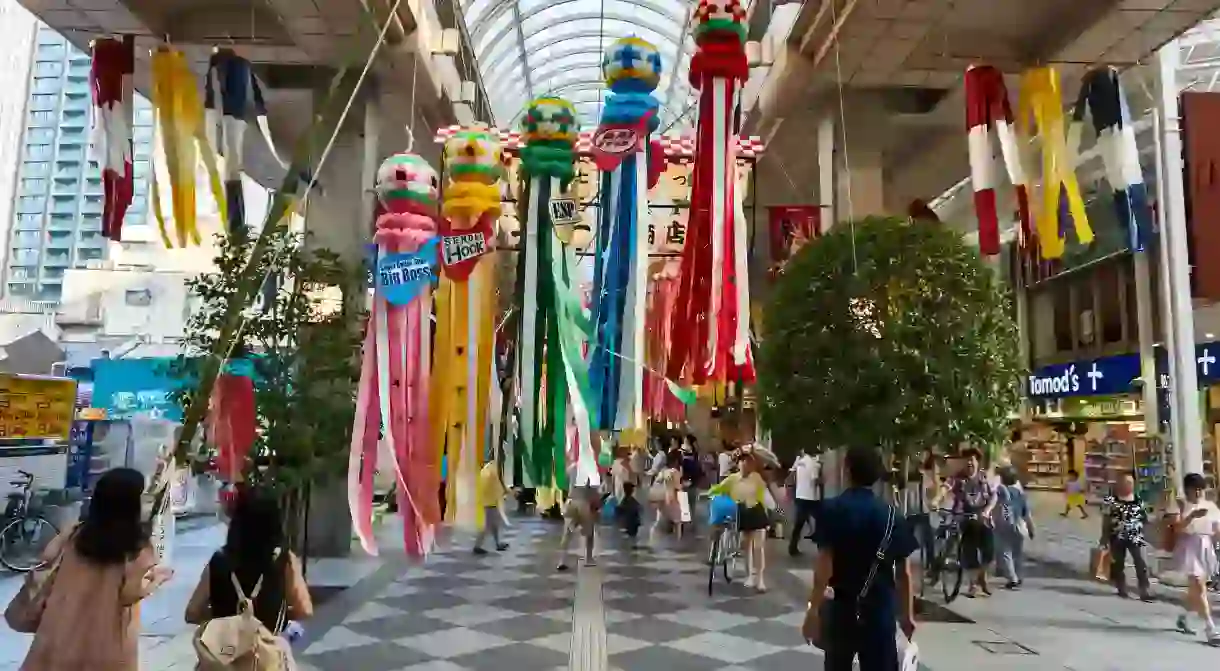The Best Things To Do in Sendai

Sendai is a city that sits at the doorstep of the nation’s more wild side. It’s a day trip from secluded mountain retreats, rugged coastlines, and remote islands. At the same time, it’s one of Japan’s most modern and sophisticated cities with a culinary scene that will challenge and surprise. Located in the northern prefecture of Miyagi, to say the city offers everything wouldn’t be an overstatement; major city attractions, history, culinary diversity and even a neighboring cat island.
The largest city in Japan’s second largest region (Tohoku), Sendai is a city with a lot going for it but has a surprisingly modest number of tourists compared to many other corners of the country. The lack of tourism overpopulation, and its excellent position by the mountains and along the coast make it the perfect place for more intrepid visitors looking to see a more diverse side of Japan.
Whether you want a city adventure without the crowds of Tokyo, a culinary destination that will challenge and delight, untamed landscapes, or you want to visit an island run by cats, Sendai has it all, no question.
Pay your respects at Zuihoden
Architectural Landmark, Historical Landmark

Flanked by cedar trees towers and decorated in vivid colours, Zuihoden, the mausoleum of Date Masamune is fascinating for both its architecture and history. During the Edo period (1603 – 1868), Date Masamune was one of the most powerful feudal lords of the land. During his reign, he garnered a reputation for being a great warrior and leader. His mythology was magnified thanks to the fact he was missing an eye, which legends report he plucked out himself after a senior member of his clan said an enemy could snatch it during a fight. He and his heirs ruled over Sendai and were laid to rest at Zuihoden mausoleum.
Dine on 'gyutan' (beef tongue) at Riyku
Restaurant, Japanese
Ask any Sendai local what the city’s most iconic dish is, and there’s a very high chance they’ll name gyutan, which in English is beef tongue. The origin of the recipe can be traced back to the post-war period. In 1948, yakitori chef Sano Keishiro, on a mission to minimize food wastage, figured out a perfect way to grill the leftover meat to create a dish that was both economical and delicious. Rikyu is a restaurant that specializes in gyutan and offers a variety of ways to enjoy the dish including grilled and deep-fried options, alongside other options such as sushi.
Visit the snow monsters in winter
Ski Resort

Make a Kokeshi doll at Wagatsuma Workshop
Shop
Scattered around craft stores, museum and gift shops all over Sendai and the surrounding area, you’ll find delicately painted little limbless dolls known as Kokeshi dolls. While their exact origins are unclear, we do know that they did hail from this northern corner of Japan and were originally created as simple, easy-to-make children’s toys. Sign up for a class at Wagatsuma Kokeshi Wooden Toy Shop. Run by a third-generation Kokeshi doll maker, the workshop will both give you a chance to explore your creative side, and also at the end, you’ll have your own little authentic Sendai omiyage (souvenir) to take back home.
Take a day trip to the Sanriku Coast
Natural Feature

With its sharp grey cliffs, dark sand coast and entirely blue water, the Sanriku Coast is a dramatic landscape that looks worlds away from the Japan most people imagine. It stretches 300km (186 miles) along the Pacific Coast including Sendai’s home prefecture of Miyagi. In 2011, this was one of the major locations devastated by the tsunami, but is safe to visit today. It’s an excellent place to escape the city, see a new side of the country’s diverse landscape and marvel at the power, beauty and magnificence of Mother Nature.
Cruise on over to Tashirojima Cat Island
Natural Feature
Just off Miyagi’s Sanriku Coast – a 45-60 minute cruise from Ajishima Line ferry terminal – sits Tashirojima, more colloquially known as Japan’s ‘cat island.’ Initially, the cats were brought over to help with pest control around Tashirojima’s silkworm farms, but now the population of felines outnumbers humans at a ratio of four to one. In the middle of the island sits a cat-sized shrine (Nekokamisama) which was built in dedication to one of the island’s furry residents who was killed by a falling rock. Beyond the cats, there aren’t many tourist attractions and there are no restaurants, so bring a packed lunch and maybe a can of tuna or two for your new friends.
Party at Sendai Tanabata
Natural Feature
Tanabata is a summer festival that typically kicks off in the first week of July. But while the celebrations take place across the nation, the event is taken most seriously up north. Here many vendors across the city start working on their Tanabata streamer displays months prior to the event. The origin of the festival has roots in Chinese folklore, which recounts the meeting of the deities Orihime and Hikoboshi – two lovers separated by the Milky Way who can only meet on the seventh day of the seventh lunar month of the lunisolar calendar. All the excitement culminates with the Sendai Tanabata Fireworks Display, which is set along Hirosegawa River, on 5 August the night before the city’s major festivities.
Drink an edamame shake
Restaurant, Dessert
Edamame (salted green beans) are a popular izakaya beer snack – in Sendai, however, they’ve turned this savoury little treat into something that sounds like it shouldn’t be delicious, but really is. Known as a ‘zunda shake’, this lime-green blend of milk, green unmatured soybeans and cream tastes sweet and a little nutty. You can pick it up from Zunda Saryo at JR Sendai Station, which is jampacked with food stores and snack shops – making it an excellent culinary destination in its own right.













